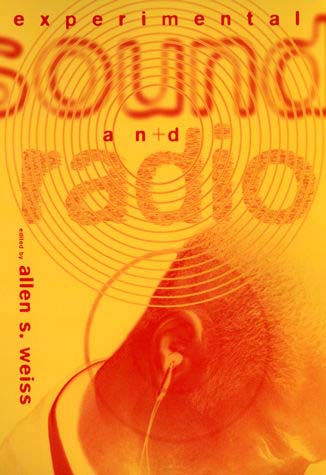Michel Chion: The Voice in Cinema (1984–) [EN, ES]
Filed under book | Tags: · cinema, film, film history, film sound, film theory, sound recording, voice

“How can a voice whose source is never seen—such as Hal in 2001: A Space Odyssey or the mother of Norman Bates in Psycho—have such a powerful hold on an audience? When does “synchronized sound” fail to link bodies to their voices, and how do such great stylists of sound film as Jacques Tati, Kenji Mizoguchi, and Marguerite Duras deploy the power of the voice?
In this brilliant essay, Michel Chion, internationally cited authority on the history and poetics of film sound, examines the human voice in cinema. The Voice in Cinema begins with the phenomenon of film’s hidden, faceless voices and their magical powers, particularly in the context of Lang’s Testament of Dr. Mabuse. Chion then explores subjective voices, bonding and entrapment by telephone, voice-thieves, screams (male and female), siren calls, and the silence of mute characters-all uniquely cinematic deployments. In conclusion, Chion considers “the monstrous marriage of the filmed voice and body” as embodied in Norman Bates. Claudia Gorbman’s fluent translation retains Chion’s sophisticated and accessible style, introducing readers to a distinct and paradigm-changing voice on film.”
First published as La voix au cinéma, Cahiers du Cinema, Paris, 1984.
English edition
Edited and translated by Claudia Gorbman
Publisher Columbia University Press, 1999
ISBN 0231108222, 9780231108225
183 pages
Review: Tim Anderson (Echo, 2000).
Publisher (EN)
The Voice in Cinema (English, trans. Claudia Gorbman, 1999, updated on 2020-9-19)
La voz en el cine (Spanish, trans. Maribel Villarino Rodriguez, 2004, added on 2020-9-19)
Sylvia Mieszkowski, Joy Smith, Marijke de Valck (eds.): Sonic Interventions (2008)
Filed under book | Tags: · dancehall, hip hop, music, reggae, sound recording, voice

Sonic Interventions makes a compelling case for the importance of sound in theorizing literature, subjectivity and culture. Sound is usually understood as our second sense and ż as our belief in a visually dominated culture prevails ż remains of secondary interest. Western cultures are considered to be predominantly visual, while other societies are thought to place more importance on the acoustic dimension. This volume questions these assumptions by examining how sound differs from, and acts in relationship to, the visual. It moves beyond theoretical dichotomies (between the visual and the sonic, the oral and literature) and, instead, investigates sonic interventions in their often multi-faceted forms. The case studies deal with political appropriations of music and sounds, they explore the poetic use of the sonic in novels and plays, they develop theoretical concepts out of sonic phenomena, and pertain to identity formation and the practice of mixing in hip hop, opera and dancehall sessions. Ultimately, the book brings to the fore what roles sound may play for the formation of gendered identity, for the stabilization or questioning of race as a social category, and the conception of place. Their intricate interventions beckon critical attention and offer rich material for cultural analysis.
Publisher Rodopi, 2008
ISBN 9042022949, 9789042022942
328 pages
PDF (updated on 2012-8-3)
Comment (0)Allen S. Weiss (ed.): Experimental Sound & Radio (2000)
Filed under book | Tags: · listening, noise, public broadcasting, radio, radio art, sound art, sound recording, voice

“Art making and criticism have focused mainly on the visual media. This book, which originally appeared as a special issue of TDR/The Drama Review, explores the myriad aesthetic, cultural, and experimental possibilities of radiophony and sound art. Taking the approach that there is no single entity that constitutes “radio,” but rather a multitude of radios, the essays explore various aspects of its apparatus, practice, forms, and utopias. The approaches include historical, political, popular cultural, archeological, semiotic, and feminist. Topics include the formal properties of radiophony, the disembodiment of the radiophonic voice, aesthetic implications of psychopathology, gender differences in broadcast musical voices and in narrative radio, erotic fantasy, and radio as an electronic memento mori.
The book includes a new piece by Allen Weiss on the origins of sound recording.”
Contributors: John Corbett, Tony Dove, René Farabet, Richard Foreman, Rev. Dwight Frizzell, Mary Louise Hill, G. X. Jupitter-Larsen, Douglas Kahn, Terri Kapsalis, Alexandra L. M. Keller, Lou Mallozzi, Jay Mandeville, Christof Migone, Joe Milutis, Kaye Mortley, Mark S. Roberts, Susan Stone, Allen S. Weiss, Gregory Whitehead, David Williams, Ellen Zweig.
Publisher MIT Press, 2000
ISBN 0262731304, 9780262731300
188 pages
PDF (updated on 2012-8-3)
Comment (0)
